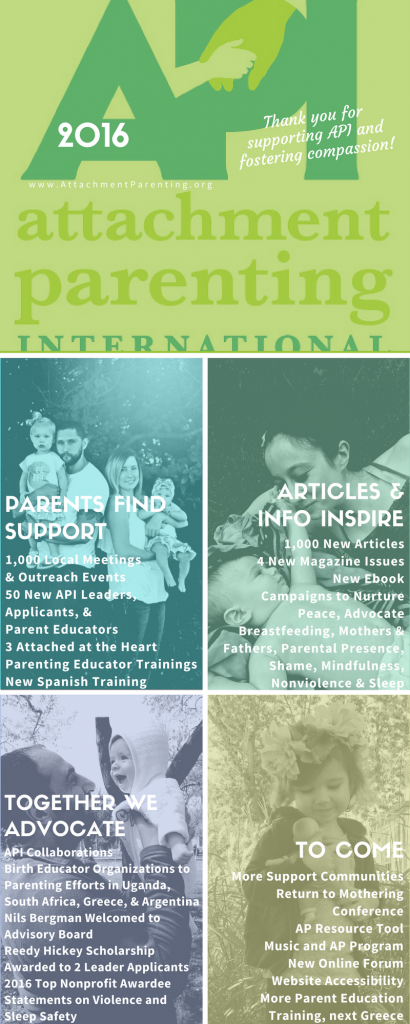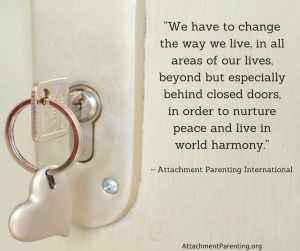Category: Respond with Sensitivity
Behind closed doors
Teaching the way of gratitude
 Have you discovered how very powerful giving thanks is for uplifting your mood, day and life? Coaches and spiritual teachers these days suggest that we keep a gratitude journal or set aside time to be grateful every day as a way to shift our focus toward a more positive frequency.
Have you discovered how very powerful giving thanks is for uplifting your mood, day and life? Coaches and spiritual teachers these days suggest that we keep a gratitude journal or set aside time to be grateful every day as a way to shift our focus toward a more positive frequency.
It’s not just another thing to try so we can feel better — in my experience, it really works.
Making a shift toward gratitude
The study of neuroplasticity confirms that when we intentionally and repeatedly focus on “taking in the good” — as neuropsychologist Rick Hanson PhD, suggests — we cause changes in our neurons that shift us away from the innate bias toward always looking for threat.
In other words, when we develop a conscious gratitude practice, over time we can actually change our negative mind chatter into a more settled way of being that is open to the possibility that good things just might indeed come our way. I like to think of it as quality elevator music that accompanies us as we intentionally choose to experience life on higher floors.
If you are like me, noticing what I already have that is good enough does not come naturally. I was raised to be constantly prepared for whatever problems were inevitably on their way to my door. I was taught to be constantly doing, preparing, and preventing with a kind of “storing up food for the harsh winter” mentality. But even though the experiences of the Great Depression were passed down to me in my DNA, I am determined that this fear-based way of living will stop with me.
If we can instill the habit of giving thanks, we prepare our children for a life of pleasant contentment.
Ever since my daughter was very small, we have made it a practice to express gratitude. In that kind of “Do as I say, not as I do” way, it’s easier for me to notice how she says things and to offer a course-correct toward a more positive view.
To my delight, out of the blue, she will sometimes spontaneously list all the things she loves about our house, our neighborhood, our view, the store that offers the stuff we need, the birds flying by, and on and on. It just bursts out of her! In those moments, I get to switch channels from brooding over my to-do list to instead witnessing her enthusiasm. It makes me give thanks that I must be doing something right after all.
A good way to create a readiness to be grateful is to establish the habit of giving thanks. Giving thanks together, in whatever way suits your family, makes everyone slow down and take a mindful moment.
A fitting place to do this is at mealtimes, because they happen at the same time each day and everyone is sitting down together. Even a sandwich on the hiking trail can serve as another opportunity to pause and recognize the gift of nourishment. Food comes from somewhere and it ends up on the table because of the effort of people — so that’s something to appreciate.
In our house, we like to make up songs. If they catch on, we keep them. Below is one of our gratitude prayers before we eat. It is a little song we sing at the table to bless and enliven the food we are about to eat. It also gives the less-than-favorite vegetables a little more status, I hope. Imagine it going with a pleasant sort of Irish music tune.
Thank You for My Food
Thank you for my food, thank you for my food,
Made by Mother Earth and warmed by Father Sun.
Thank you to the seed that grew in the soil,
And blessings to the farmers who made food from their toil.
Thank you for my carrots, thank you for my tacos, thank you for my…
Thank you for my food.
Sometimes my child will add a line to thank the cook, which I accept with a gracious bow.
Attachment nourishment
Babies cannot be expected to self-soothe
Let’s continue creating peace
8 examples of new year parenting resolutions
 However you feel about making new year resolutions, this very early part of the year at least serves as an annual reminder that we need to — at some point — take time to reflect on our lives, check where we are on our goals, and continue making plans moving forward.
However you feel about making new year resolutions, this very early part of the year at least serves as an annual reminder that we need to — at some point — take time to reflect on our lives, check where we are on our goals, and continue making plans moving forward.
It’s important to set and work toward goals in our parenting journey. We have to be seeking growth in our attachment relationships with our children to be able to experience it, and being the parent, that growth falls back on us continually working to move forward on our parenting journey.
Here are 8 examples of new year parenting resolutions:
- I resolve to admit when I am wrong, and to include my kids in the housework, even when it would be faster and easier not to. — Jennifer
- I resolve to breastfeed my child at least 2 years.– Kate
- I resolve to do more self-care, including regular exercise, more sleep, and eating greens everyday. — Monica
- I resolve to validate emotions and experience, to use positive language, to model what I wish to elicit, to assume the best of intentions, to learn from my child, and to be present. — Miriam
- I resolve to become aware of frustration, to see my child’s resistance as a wake-up call, to become more proactive instead of reactive, to speak respectfully of my child’s other parent, to make more emotional deposits than withdrawals, to see my child as good and not bad, to find ways to acknowledge and encourage my child, to see “misbehavior” as an unmet need, to give my child advance notices of a transition, and to help my child move closer to his purpose in life. — Bill
- I resolve to read a book related to each of API’s Eight Principles of Parenting, to teach baby signs, to learn infant massage, and to not spank and to instead practice positive discipline. — Christina
- I resolve to be more connected to my children. — Cason
- I resolve to trust my instincts, to nurse in public, to care for myself, to live in the moment, and to ask for help. — Courtney
Editor’s pick: Top 10 of 2016
 2016 has been a fulfilling year for Attachment Parenting International (API). Although the very best parent support is found in local API Support Groups, our evidence-informed magazine articles, blog posts, teleseminars, ebooks, and other resources also provide regular pulses of support to millions of families worldwide seeking information on raising their children with strong attachments.
2016 has been a fulfilling year for Attachment Parenting International (API). Although the very best parent support is found in local API Support Groups, our evidence-informed magazine articles, blog posts, teleseminars, ebooks, and other resources also provide regular pulses of support to millions of families worldwide seeking information on raising their children with strong attachments.
Of all the posts published by API this year, here are the top 10 of 2016:
- “Reading between the lines, Part 1: Media Analysis Guidelines for Parents” — Just heard a story that is less-than-flattering toward attachment parenting, and don’t know what to believe? This article helps you learn how to discern fact from fiction in your reading of news, research, and blogs, so you can make informed decisions in your parenting.
- “Who will baby attach to?” — It’s the baby who decides who will be his or her primary caregiver, and that decision most often occurs within the first 7 months of life. The caregiver who is the most sensitively responsive and consistently loving — whether mother, father, grandparent, or nanny — is selected to be the primary caregiver. This article gives more details to this timeline, and why emotional care ranks higher than daily care in the baby’s world.
- “Emotional abuse, a dark form of children’s maltreatment” — Emotional abuse doesn’t have to be overt to be incredibly damaging. Read more on the the subtleties of emotional abuse, and its outcomes, in this article.
- “What makes emotional trauma? Fear, disconnect, and shame” — Shame in itself is a normal emotion, but like anger, unresolved shame can grow to unhealthy proportions. This article discusses the 3 ingredients to emotional trauma, of which unresolved shame is one, the enormity of healing from a shame-based self-image, and serves as a cautionary call for parents to be mindful in how they raise their children to process shame.
- “The latest research in nurturing touch, breastsleeping, and babywearing” — At least 70% of new parents are found to bedshare at least occasionally, and 6-year-olds who bedshared as babies are found to be happier, less fearful of peers, and better learners. Here’s another tidbit: No oxytocin is released in elective cesareans, so skin-to-skin contact, breastfeeding, massage, and babywearing is extra critical to compensate for the essential need of oxytocin in a newborn’s healthy development. Interested in learning more? This article is full of the latest research in touch, breastfeeding, and bedsharing.
- “To promote breastfeeding is to promote Attachment Parenting” — Breastfeeding is more common in less affluent regions. This article examines a report that showed a link between poverty and higher breastfeeding rates, why this may not be as ironic as you think, and what this reflects about our cultures views on formula use and breastfeeding support.
- “What really matters when it comes to daycare” — Not working is not always possible, or desired, for parents. But infants and children need ample time with their primary caregivers for healthy attachment development. This article explores how working parents can balance their time away with their child’s attachment needs.
- “A moment of silence for the ‘mother’ of doula work” — This article is a tribute to the late Dana Raphael who not only established doula work as a profession but also was among the first scientists to stand up against formula companies’ unethical marketing in developing countries. Her work has incredibly changed the landscape of both childbirth and breastfeeding support.
- “4 ideas for gentle weaning” — Maybe you’re struggling with night-nursings, or you want to conceive another baby, or you’re just feeling a need to slow down on your toddler’s or preschooler’s nursings. Whatever the reason, deciding to begin weaning can be hard, but it can even be tougher to know how to do it without hurting your relationship with your child. Here are 4 ideas for gentle weaning that really do work without tears.
- “Being a Daddy” — Becoming a new father comes with a steep learning curve, but it can be incredibly fulfilling. This article reflects on one father’s learning curve to become an affectionate Daddy.





